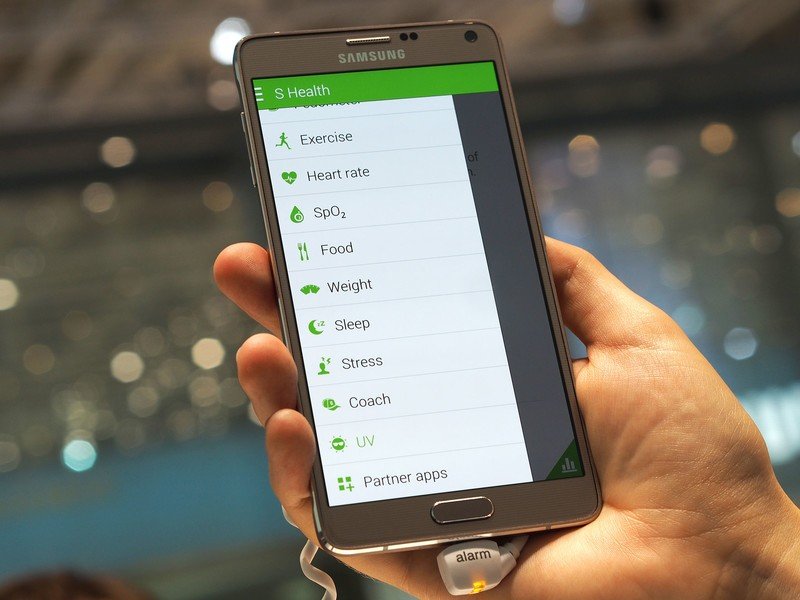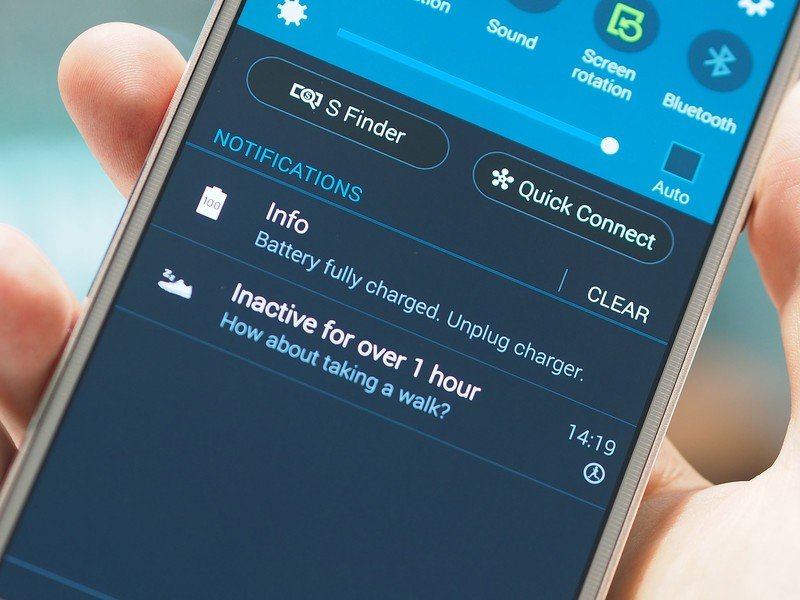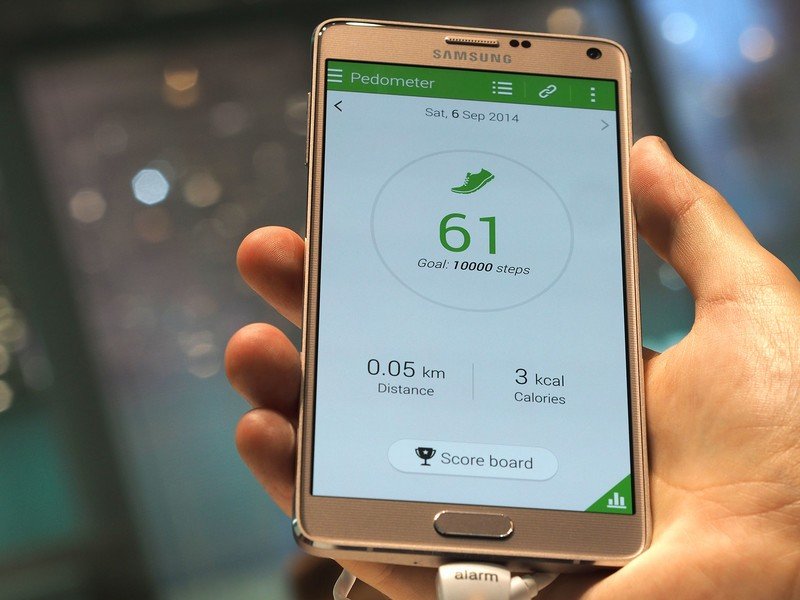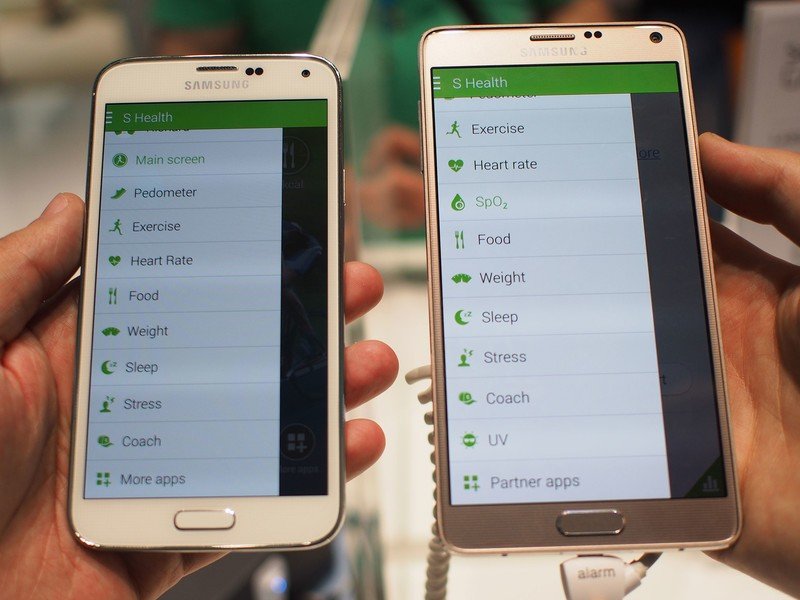Galaxy Note 4 S Health can sense and track even more stuff

Your Note 4 can record your blood oxygen saturation and sunlight UV levels, in addition to other metrics
In the Galaxy S4, Samsung introduced a built-in pedometer and the S Health app. Earlier this year it followed up with a built-in heart rate sensor in the Galaxy S5. And now in the new Galaxy Note 4, the Korean manufacturer brings a couple more sensor capabilities into the mix. Read on for a quick look at S Health's new tricks.

The latest version of S Health on the Galaxy Note 4 comes with all the capabilities and features owners of the Galaxy S5 will be familiar with — an exercise tracker with built-in pedometer, and the ability to keep tabs on food, weight, sleep patterns (with a supported accessory), and your heart rate using the built-in sensor. On top of that, the phone can now sense your blood oxygen saturation (SpO2) and the strength of ultraviolet light from the sun.
Both of these are measured using the Note 4's sensor module, which is once again situated below its rear camera. And it's grown a bit since we first saw it on the Galaxy S5.

Reading your SpO2 level works the same as reading your heart rate — in fact, when you take a reading the former, the Note 4 will also report the latter. As we've seen on other Samsung phones like the Galaxy S5 Mini, taking readings using the rear-mounted sensors can be hit and miss, and on a couple of occasions the Note 4 demo units at IFA failed to take an SpO2 reading even when our finger was right over the sensor. That said, we're still dealing with preproduction hardware and software in a noisy trade show environment.
According to Wikipedia), your SpO2 level should generally be above 94 percent. Any lower than 85 percent and you'll have bigger problems than properly aligning your finger with a bunch of sensors on your smartphone.


Recording UV levels uses the same sensor. The Galaxy Note 4 asks you to point the back of the phone up towards the sun for a few seconds, then gives you a reading from low to high. We couldn't test this feature outside, but after a few seconds the Note 4 reassuringly told us that the UV levels under the artificial show floor lighting were indeed "low."
As with other health metrics, S Health keeps track historic readings of both SpO2 and UV levels.
Be an expert in 5 minutes
Get the latest news from Android Central, your trusted companion in the world of Android

The S Health app itself has also undergone a minor redesign, with a refreshed overview page displaying your latest stats — SpO2, steps, caloric intake, heart rate, stress and more.
So if you're into tracking all your vitals on your smartphone, the Galaxy Note 4 offers even more stuff to keep track of. How much of this will be of any value to the average user, however, remains to be seen.










More: Samsung Galaxy Note 4 hands-on

Alex was with Android Central for over a decade, producing written and video content for the site, and served as global Executive Editor from 2016 to 2022.
